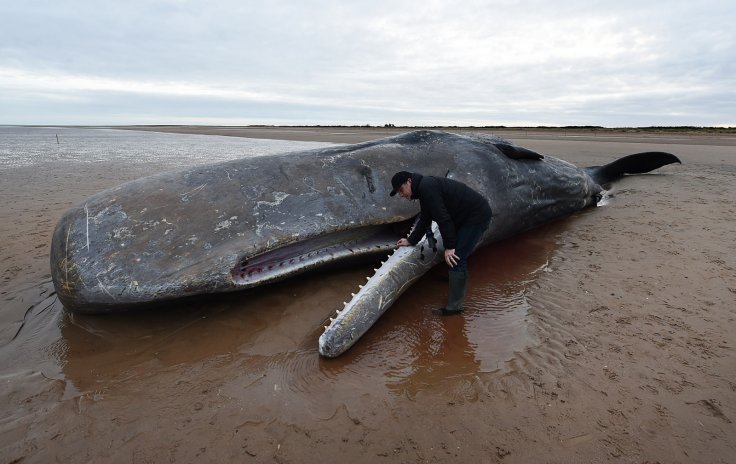
Sperm whales, which is the largest of the toothed whales, used to be the prime target of the commercial whaling industry from 1800 to 1987. But now the ocean pollution has become a new threat to their lives, as a dead sperm whale was found in eastern Indonesia that had swallowed almost six kilograms of plastic waste, including 115 cups.
On Tuesday, the officials at Wakatobi National Park in Sulawesi province stated that a 31-foot long whale was found dead on Monday, November 19 in waters near Kapota Island. As per reports from Associated Press, park chief Heri Santoso said that the whale ate 115 plastic cups, four plastic bottles, 25 plastic bags, a nylon sack, two flip-flops and consumed more than 1,000 other assorted pieces of plastic.
Santoso said that the rescue team was alerted about the incident after the local environmentalists told them that the local villagers had surrounded the dead whale and were beginning to butcher the body.
The cause of its death was not known but "the facts that we see are truly awful," said a marine species conservation coordinator at WWF Indonesia, Dwi Suprapti.
This species received the name after the waxy substance, spermaceti, found in their heads. The International Whaling Commission placed a moratorium on commercial whaling in 1986 and since then NOAA Fisheries and their partners are trying to conserve and rebuild the population of the sperm whale. Even though there is no exact accounting of the total number of these whales worldwide, the best-estimated numbers are between 300,000 and 450,000.
Earlier in June, after a dead pilot whale was found in Thailand, the autopsy revealed that it had consumed 80 pieces of plastic rubbish. Another dead sperm whale was spotted earlier this year on Sothern coast of Spain and officials discovered 29 kilos of plastic and other waste materials from its stomach.
Such incidents clearly indicate that how polluted our oceans are and the future of these marine creatures. Several environmental activists, even the United Nations have come forward to aware the world about the circumstances of ocean and plastic pollution. But, is it really working?
It should be noted that for more than 50 years, the global production of plastic has increased due to its popularity. The facts also stated that almost 8 million metric tons of plastic are thrown into the ocean annually and among them 236,000 tons are microplastics.
As per a study, published in the journal Science in January, Indonesia is the second country after China to dump the maximum amount of plastic waste into the world's ocean.
Researchers also claim that if the situation continues the way it is going now, then by 2050 there will be more plastic in the oceans than there are fish (by weighting).








